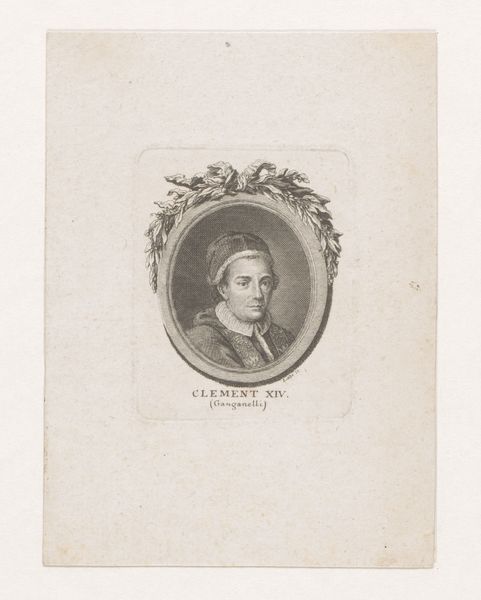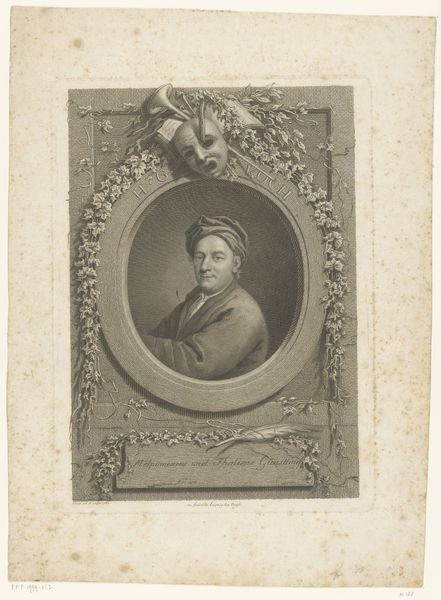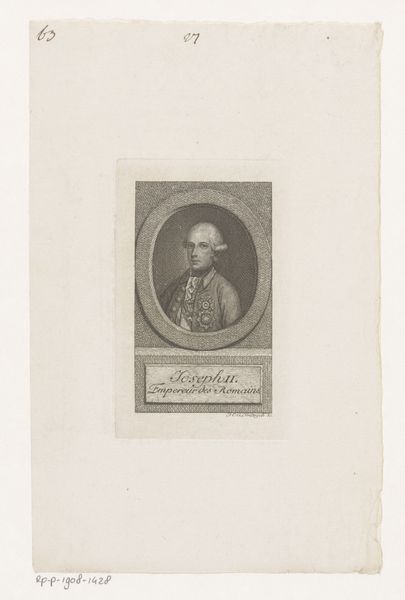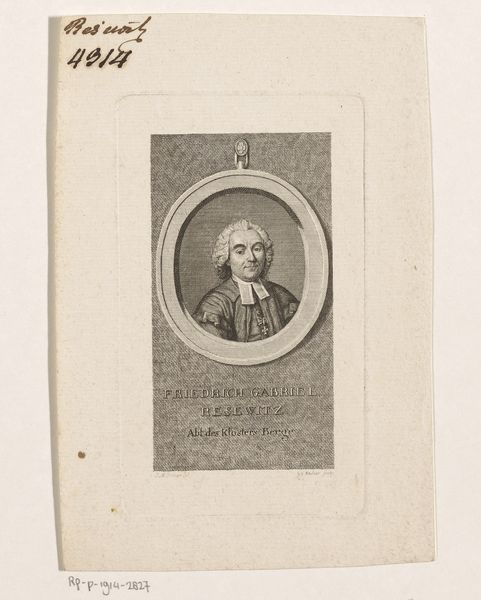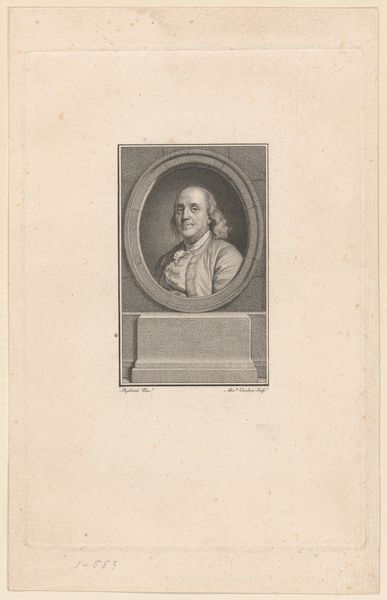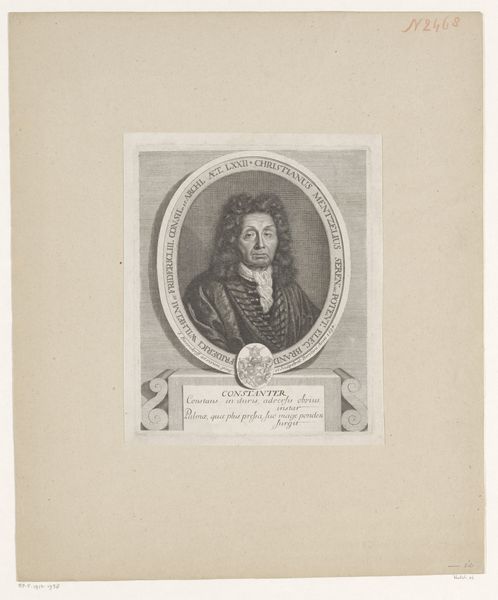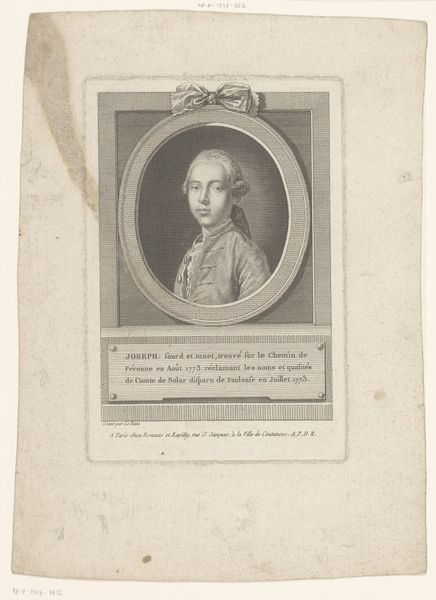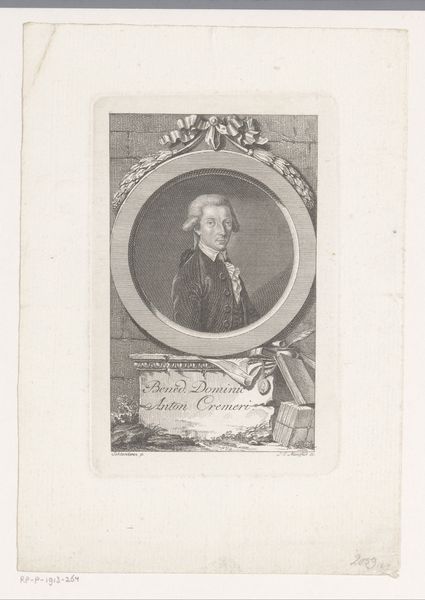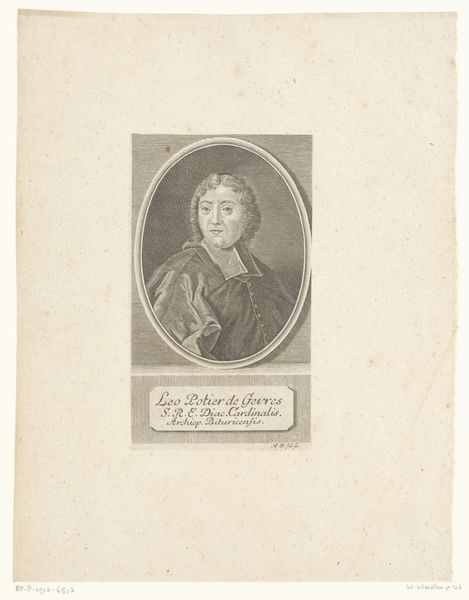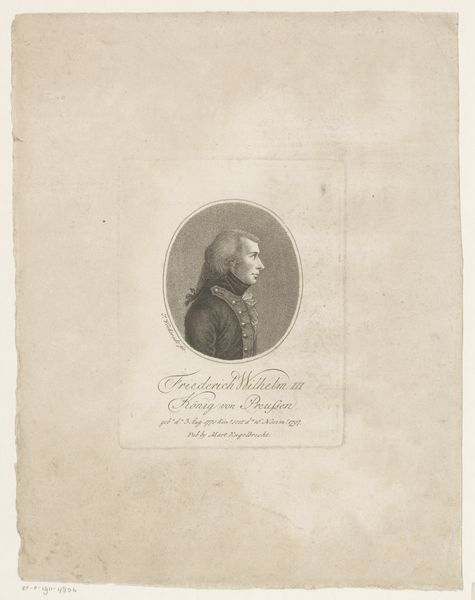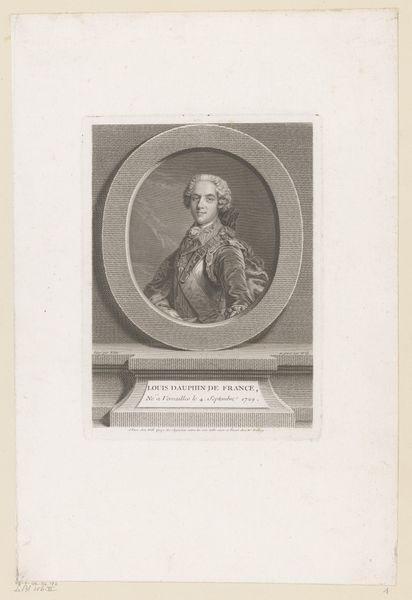
print, engraving
#
portrait
#
baroque
# print
#
old engraving style
#
engraving
Dimensions: height 155 mm, width 93 mm
Copyright: Rijks Museum: Open Domain
Editor: So, this is "Portret van Pietro Ottoboni," an engraving made in 1735 by Johann Martin Bernigeroth. It feels very formal and of its time, very baroque in style, doesn’t it? How do you interpret this work, especially within its historical context? Curator: It’s more than just a formal portrait, isn't it? Look closely – it’s situating Cardinal Ottoboni within the rigid power structures of the 18th-century Catholic Church. What does his expression tell us, considering his position as a high-ranking cleric? How complicit was he in upholding those hierarchies, and what role did the Church play in the social and political landscape of that era? Editor: That's interesting. I hadn't really thought about it beyond the surface. It's definitely making me think about power and how it’s represented. But, is it fair to judge historical figures by contemporary standards? Curator: That's the crucial question, isn't it? We can’t simply apply modern ethics wholesale, but we can critically examine how power dynamics operated and the impact they had on marginalized groups. Can we explore, through this portrait, the historical roots of certain social injustices we grapple with today? Editor: I see your point. So by looking at Ottoboni's portrait, we are analyzing the systems he was part of. It makes the engraving more of a statement than just a likeness. I hadn't thought about it that way before. Curator: Precisely. It is a starting point for a dialogue on history, power, and representation, rather than just an object of aesthetic admiration. This reminds us that images are always active participants in the ongoing conversation of social values.
Comments
No comments
Be the first to comment and join the conversation on the ultimate creative platform.
